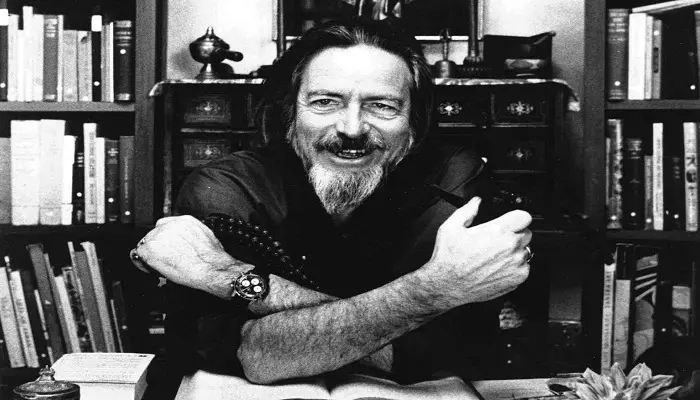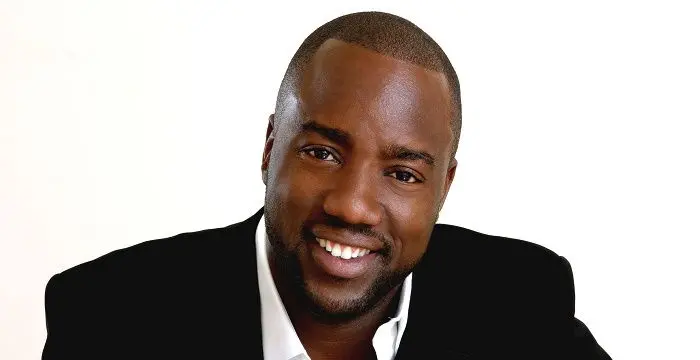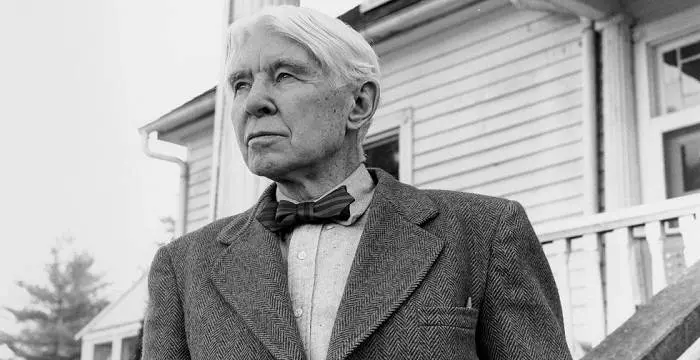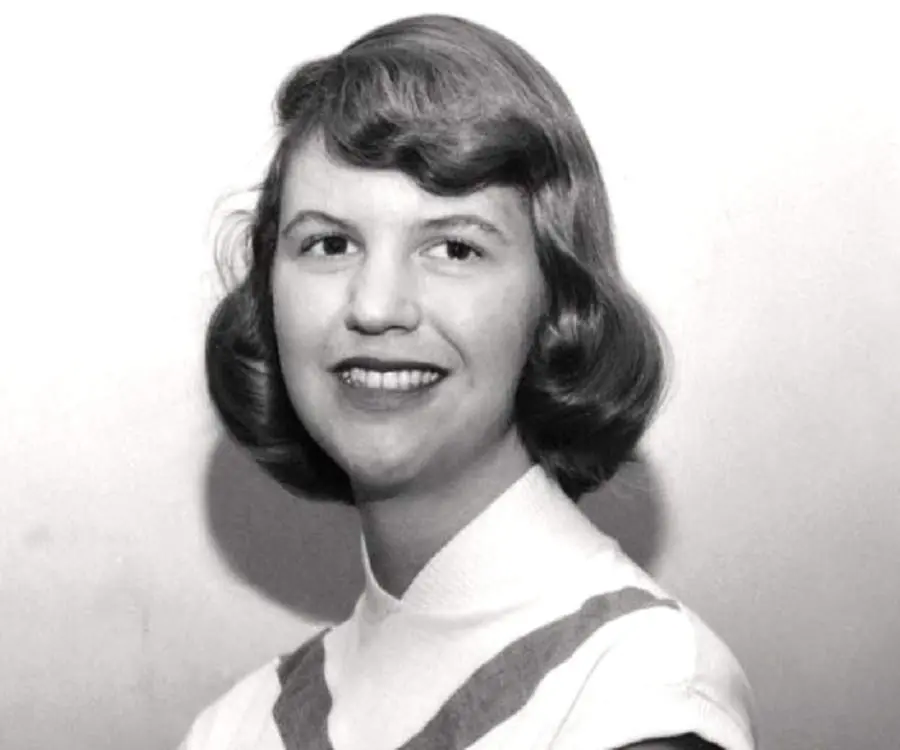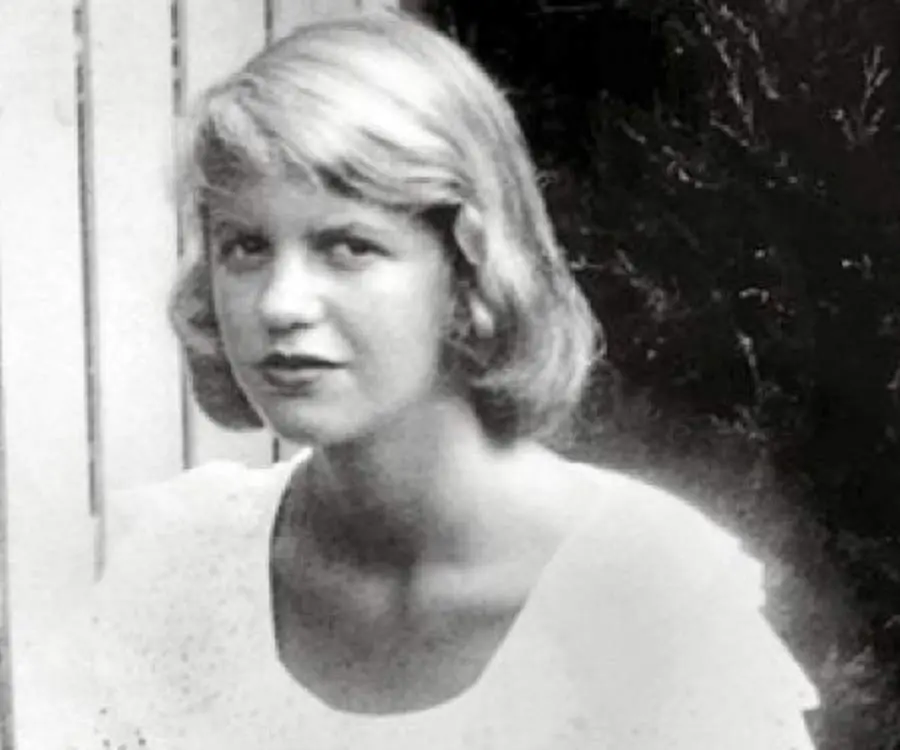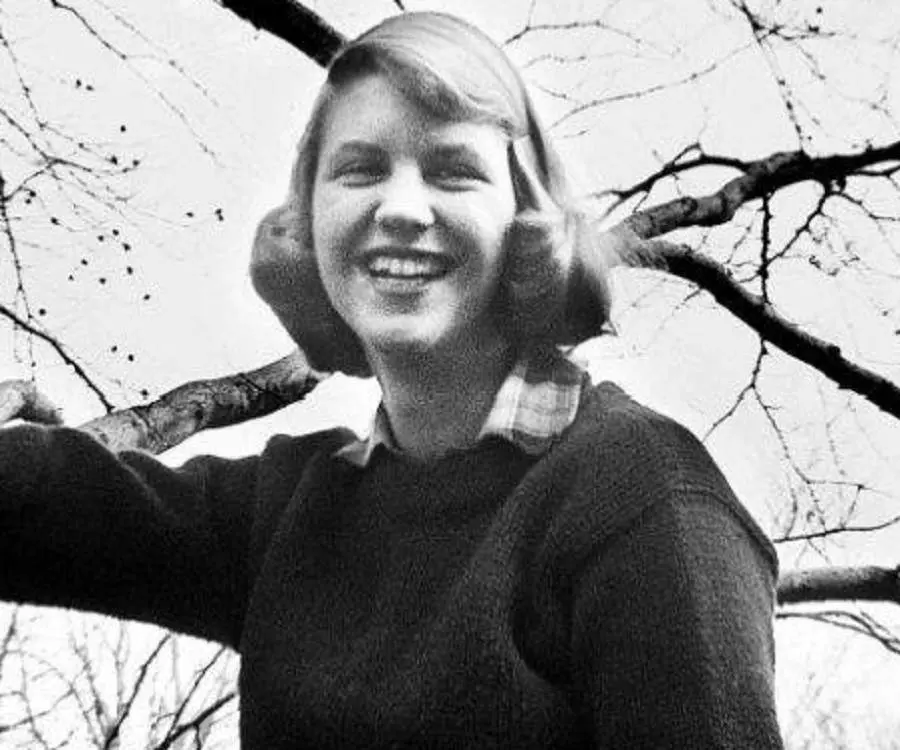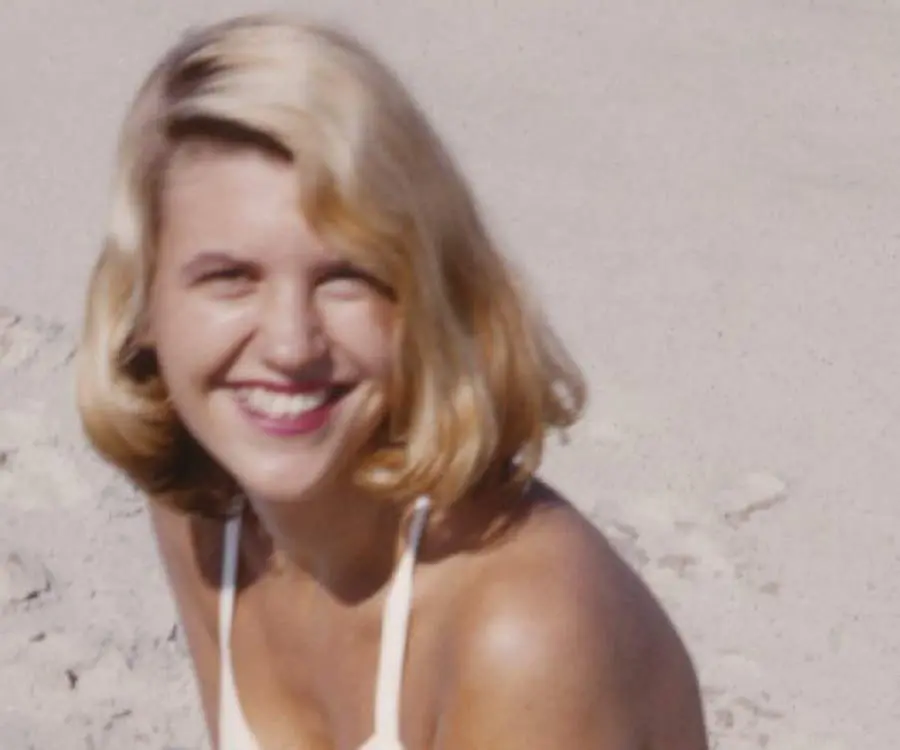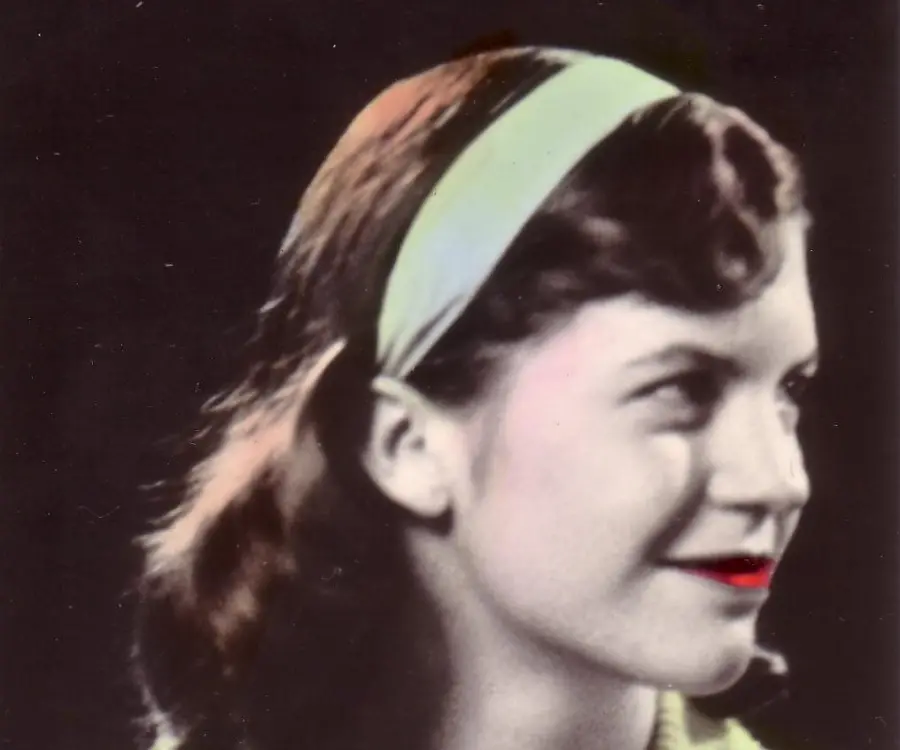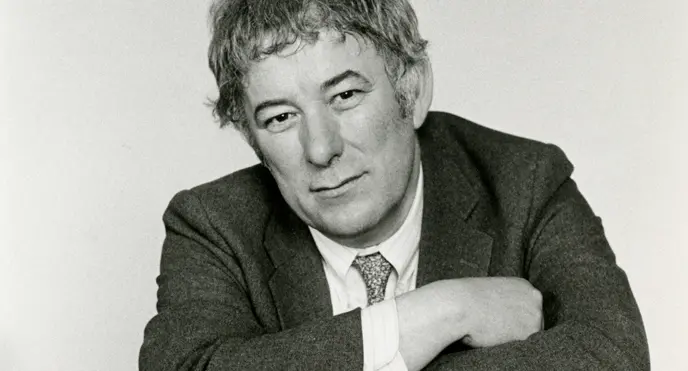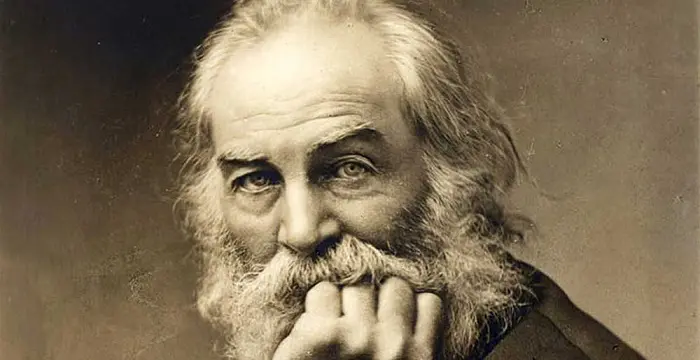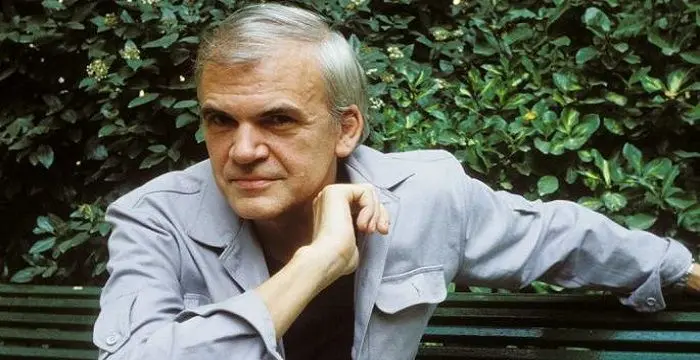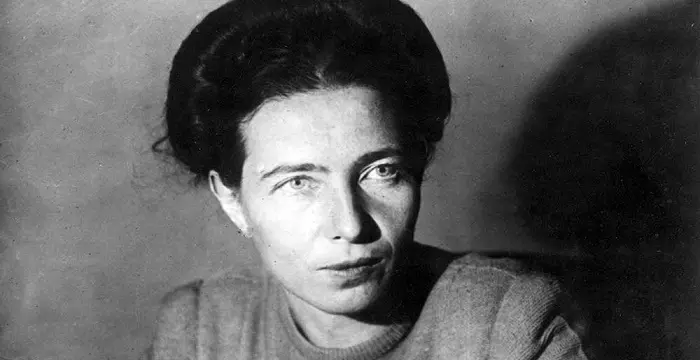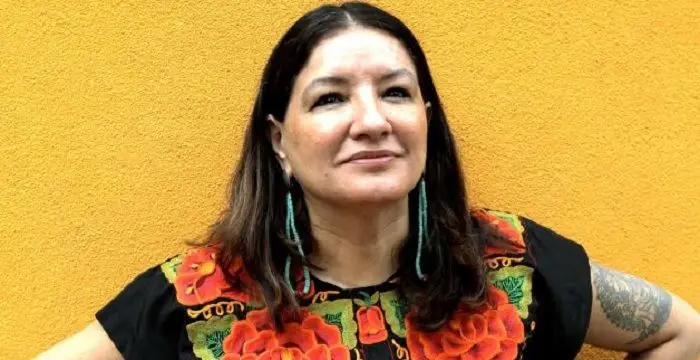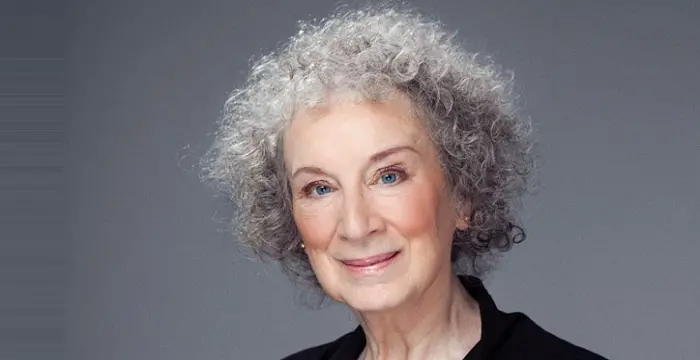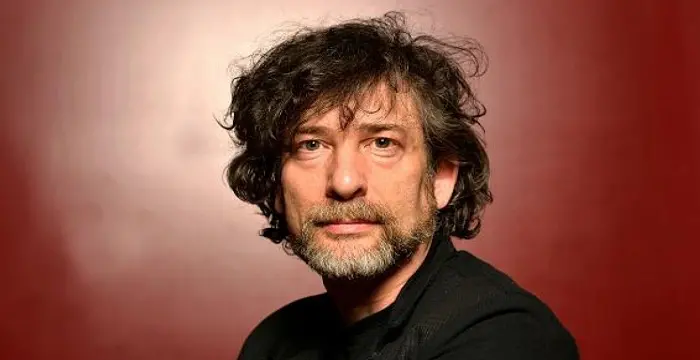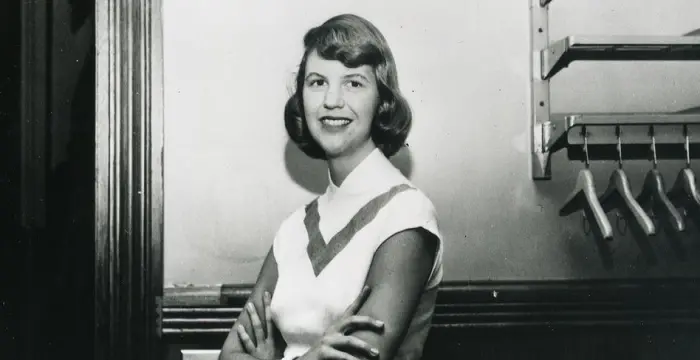
Sylvia Plath - Writers, Facts and Life
Sylvia Plath's Personal Details
Pulitzer Prize winner, Sylvia Plath was an American poet, novelist, and short story writer
| Information | Detail |
|---|---|
| Birthday | October 27, 1932 |
| Died on | February 11, 1963 |
| Nationality | American |
| Famous | Boston University, Writers, Poets, Novelists, Writers |
| City/State | Boston, Massachusetts |
| Spouses | Ted Hughes |
| Siblings | Warren |
| Childrens | Frieda Hughes, Nicholas Hughes |
| Universities |
|
| Notable Alumnis |
|
| Cause of death |
|
| Birth Place | Boston, Massachusetts, United States |
| Epitaphs | Even amidst fierce flames the golden lotus can be planted |
| Gender | Female |
| Father | Aurelia Schober Plath |
| Mother | Otto Plath |
| Sun Sign | Scorpio |
| Born in | Boston, Massachusetts, United States |
| Famous as | Poet, Novelist, and Writer |
| Died at Age | 30 |
// Famous Writers
Alan Watts
Alan Watts was a famous British philosopher known for his Zen teachings and interpretations of Eastern philosophy. Read more about this great philosopher in the following article.
Malik Yoba
Malik Yoba is an American actor, writer, and singer who made his film debut in 1993 with ‘Cool Runnings.’ Check out this biography to know about his childhood, family life, achievements and fun facts about him.
Carl Sandburg
Carl Sandburg was a famous multiple Pulitzer Prize winner writer and poet. Read more about the life and the works of this prolific writer in the following article.
Sylvia Plath's photo
Who is Sylvia Plath?
Sylvia Plath has been hailed as one of the most renowned and influential poets of the twentieth century.Born in the United States of America in the early 1930s, she has been credited with advancing the genre of confessional poetry. She was also equally famous for her short stories and novel. She started writing early in her life and had her first poem published at the age of eight, her first national publication at the age of eighteen, and was selected a guest editor of ‘Mademoiselle’ at twenty. However, she failed to accept rejections in a healthy way and at the age of twenty-three unsuccessfully tried to commit suicide. Nonetheless, she successfully completed her studies and went to England, where he met and married Ted Hughes. They first lived in the US, but later returned to England, where she continued to write. She had her first book of poems published at the age of twenty-eight. This was in fact, one of the only two books that were published in her life time; all others were published after her suicide at the age of thirty.
// Famous Poets
Charles Bukowski
Charles Bukowski was a German-born American novelist, short story writer and poet. With this biography, learn in details about his childhood, life, works, career and timeline
Seamus Heaney
Nobel Laureate Seamus Heaney was an Irish poet, playwright and translator. Know about his profile, childhood, life and timeline in the biography below.
Walt Whitman
Walt Whitman was an American poet, journalist and humanist. Read this brief biography to find more on his life & timeline.
Childhood & Early Life
Sylvia Plath was born on October 27, 1932, in Boston, Massachusetts. Her father, Otto Emil Plath, was a professor of biologyat the Boston University. Originally from Germany, he worked extensively on bees and became famous for his 1934 book, ‘Bumblebees and Their Ways.’
Her mother, Aurelia Frances Plath (née Schober),was a student of Otto Plath at the Boston University. It is believed that she rewrote her husband’s technical text, making ‘Bumblebees and Their Ways’ suitable for general readers.Sylvia was the eldest of her parents’ two children.
In 1936, the family left Boston for Winthrop. Here on November 5, 1940, just a few weeks after Sylvia’s eighth birthday, Otto Plath died from complications arising out of diabetes. Sylvia found the death a kind of betrayal by her father.
Shocked by her father’s death, shestopped believing in God. In order to cope with her grief, she found solace in writing. In 1941, shortly after her father’s death, she had her first poempublished in the children’s section of ‘Boston Herald.’
In 1942, the family shifted to Wellesley, Massachusetts. Here Aurelia began teaching at Boston University while Sylvia was admitted to Bradford Senior High School (now Wellesley High School) in the fifth grade.
When she turned eleven she began writing journals, a habit she maintained throughout her life. Side by side, she continued writing poems, many of which were published in local papers and magazines.
Her first article to be published in a national paper was ‘Youth’s Appeal for World Peace’; it came out in the 16 March 1950 edition of ‘Christian Science Monitor.’From that time, her work began to appear regularly in various national papers.
After graduating from school in 1950, she enteredSmith College (Northampton) on scholarship where she majored in English. She was an exceptionally bright student and soon became the editor of ‘The Smith Review.’
College Years
In 1952, Sylvia Plath won Mademoiselle’s college fiction contest for her story, ‘Sunday at the Mintons.’ Later in 1953, she was selected a guest editor of the magazine and spent the month of June working in New York.
During this period, she missed a chance of meeting the Welsh poet Dylan Thomas who she greatly admired. Sometime now she also learned that she had been refused admission to a writers’ seminar at Harvard summer school. These incidents depressed her so much that she started behaving abnormally.
Subsequently, she returned to Wellesley and slowly her depression became so acute that she could not concentrate on her studies. Her mother took her to a psychiatrist who prescribed electric shocks, but the situation did not improve.
In spite of the fact that Mademoiselle's August issue featured several of her articles, including her poem ‘Mad Girl's Love Song’, she began to feel that she had failed.On August 24, 1953, she made her first suicide attempt.
She waited till everybody went out of the house, then she broke the lock of the medicine box and took out the sleeping pills and left a note saying she had gone out for a long walk. She then entered a crawl space and consumed forty sleeping pills.
Fortunately, she was discovered alive in time.She spent the next six months in psychiatric care, which was sponsored by the American novelist and poet Olive Higgins Prouty. By April 1954, she had recovered enough to resume writing. Sometime now she also went back to college.
Sylvia Plath submitted her thesis, ‘The Magic Mirror: A Study of the Double in Two of Dostoyevsky's Novels’ in January 1955 and graduated from Smith with highest honors in June 1955. Thereafter, she went to England to study at Newnham College under Cambridge University on a Fulbright scholarship.
While there, Plath continued writing poems, publishing them in the student newspaper ‘Varsity.’ In 1956, she married Ted Hughes, then a budding English poet; but kept it a secret until the end of her course.
Career
In June 1957, Plath returned to the USA, along with Hughes. In July, she began to work on a novel that she had started in Cambridge, but was soon frustrated at the slow pace of its progress. In September, she joined Smith College as a faculty member.
Unfortunately, the job left her with little time and energy for writing. This too added to her frustration and she lost the desire to write. In contrast, Ted became more successful in writing and publishing. Slowly, she began to wonder why she failed to achieve her goal but did not give up making efforts.
In the middle of 1958, the couple moved to Boston. Here she began working as a part time receptionist at the same psychiatric ward of Massachusetts General Hospital where she had been treated after her suicide attempt.
Around this time, her poems ‘Mussel Hunter at Rock Harbor’ and ‘Nocturne’ were accepted by the prestigious and well-paying magazine,‘The New Yorker.’ While this elated her, she found it difficult to write and this pushed her to depression once more.
From early 1959, Plath decided to write in a more inward style, trying to portray her own thoughts. Sometime now, she also enrolled at the writing class conducted by Robert Lowell. Eventually she began to have her works printed in ‘Harper's, ‘The Spectator’ and the ‘Times Literary Supplement.’
In June 1959, Sylvia Plath and her husbandleft for a trip across America and Canada, visiting several places, ultimately settling at the Yaddo artist colony in Saratoga Springs, New York State, in September.But Plath was pregnant with their first child at that time and so they left for England in December.
In February 1960, Plath signed a contract withthe British publisher Heinemann for the publication of her first book of poems: ‘The Colossus and Other Poems.’ It was published in October and received good, but limited review.Soon after that, Plath began writing her semi-autobiographical novel, ‘The Bell Jar.’
In February 1961, Plath's second pregnancy ended in miscarriage. She was highly disappointed and this was reflected in many of her poems, including ‘Parliament Hill Fields.’ In August 1961, she finished writing ‘The Bell Jar.’
In January 1962, she gave birth to her second child, and in July she found that Hughes was having an affair with another woman. This upset her deeply and in a fit of desperation, she burnt the only manuscript of her second novel, a sequel to ‘The Bell Jar.’
She separated from Hughes in September 1962. From the beginning of October, she began writing once more, trying to negate the pain of her separation with writing. From October 11 to November 4, she produced twenty-five poems, which were later hailed as the best in her career.
Sometime now, Hughes came back to pack up his things and before he left, he told her how he hated living with her. Though hurt, she kept on writing vigorously and from November, she began to arrange them in manuscript form. It would later be published as ‘Ariel’; but she would not live to see that.
In January 1963, her only novel ‘The Bell Jar’ was published under the pseudonym of 'Victoria Lucas.' Soon after that, she began working on another novel, ‘Double Exposure’; but her last work never saw the light of the day and its manuscript went missing sometime in 1970.
Major Works
Sylvia Plath is best remembered for ‘Ariel’, a book of poems published posthumously in 1965. The poems, written during the last phase of her life, shook her readers and earned her the fame she had been yearning for all her life. Today many critics describe it as the beginning of a new movement.
Awards & Achievements
In1982, Sylvia Plath was posthumously awardedthe Pulitzer Prize forher book ‘The Collected Poems.’The poems were collected by Ted Hughes and published in 1981.
Personal Life & Legacy
On June 16, 1956, Sylvia Plath married Ted Hughes. The couple had two children;Frieda and Nicholas. While Friedagrew up to be a poet and a painter,Nicholas became an expert in stream salmonid ecology.
In September 1962 Hughes left her for another woman and Plath became very depressed. By January 1963, the weather became horribly cold, and confined at home with no telephone, her depression increased to an alarming level. Although she had been consulting psychiatrists, the situation did not improve.
In the early morning of February 11, 1963, Plath put some bread and milk in the children's room and then sealed their door off with tape. She then locked herself in the kitchen and placed her head in the oven with the gas turned on, thus committing suicide. Her body was discovered later that day.
In 2012, The United States Postal Service introduced a postage stamp featuring Sylvia Plath.
Trivia
Her death gave rise to a new term in psychiatry called ‘The Sylvia Plath effect’; it was coined in 2001 by psychologist James C. Kaufman and refers to the phenomenon which makes poets more susceptible to mental illness than other creative writers.
// Famous Writers
Joyce Meyer
Joyce Meyer is a Christian author and speaker. This biography provides detailed information about her childhood, life, achievements, works & timeline
Temple Grandin
Temple Grandin is a well-known American writer, autistic activist and animal expert. This biography profiles her childhood, life, achievements, career and timeline
Tennessee Williams
Tennessee Williams was one of the greatest playwrights of the 20th century. This biography of Tennessee Williams provides detailed information about his childhood, life, achievements, works and timeline.
Sylvia Plath's awards
| Year | Name | Award |
|---|---|---|
Other | ||
| 0 | 1947 - The Scholastic Art & Writing Award | |
| 0 | 1982 - Pulitzer Prize for Poetry | |
| 0 | 1955 - Glascock Prize | |
Sylvia Plath biography timelines
- // 27th Oct 1932Sylvia Plath was born on October 27, 1932, in Boston, Massachusetts. Her father, Otto Emil Plath, was a professor of biologyat the Boston University. Originally from Germany, he worked extensively on bees and became famous for his 1934 book, ‘Bumblebees and Their Ways.’
- // 1936 To 5th Nov 1940In 1936, the family left Boston for Winthrop. Here on November 5, 1940, just a few weeks after Sylvia’s eighth birthday, Otto Plath died from complications arising out of diabetes. Sylvia found the death a kind of betrayal by her father.
- // 1942In 1942, the family shifted to Wellesley, Massachusetts. Here Aurelia began teaching at Boston University while Sylvia was admitted to Bradford Senior High School (now Wellesley High School) in the fifth grade.
- // 1950After graduating from school in 1950, she enteredSmith College (Northampton) on scholarship where she majored in English. She was an exceptionally bright student and soon became the editor of ‘The Smith Review.’
- // 16th Mar 1950Her first article to be published in a national paper was ‘Youth’s Appeal for World Peace’; it came out in the 16 March 1950 edition of ‘Christian Science Monitor.’From that time, her work began to appear regularly in various national papers.
- // 1952 To 1953In 1952, Sylvia Plath won Mademoiselle’s college fiction contest for her story, ‘Sunday at the Mintons.’ Later in 1953, she was selected a guest editor of the magazine and spent the month of June working in New York.
- // 24th Aug 1953In spite of the fact that Mademoiselle's August issue featured several of her articles, including her poem ‘Mad Girl's Love Song’, she began to feel that she had failed.On August 24, 1953, she made her first suicide attempt.
- // Apr 1954Fortunately, she was discovered alive in time.She spent the next six months in psychiatric care, which was sponsored by the American novelist and poet Olive Higgins Prouty. By April 1954, she had recovered enough to resume writing. Sometime now she also went back to college.
- // Jan 1955 To Jun 1955Sylvia Plath submitted her thesis, ‘The Magic Mirror: A Study of the Double in Two of Dostoyevsky's Novels’ in January 1955 and graduated from Smith with highest honors in June 1955. Thereafter, she went to England to study at Newnham College under Cambridge University on a Fulbright scholarship.
- // 1956While there, Plath continued writing poems, publishing them in the student newspaper ‘Varsity.’ In 1956, she married Ted Hughes, then a budding English poet; but kept it a secret until the end of her course.
- // 16th Jun 1956On June 16, 1956, Sylvia Plath married Ted Hughes. The couple had two children;Frieda and Nicholas. While Friedagrew up to be a poet and a painter,Nicholas became an expert in stream salmonid ecology.
- // 1957In June 1957, Plath returned to the USA, along with Hughes. In July, she began to work on a novel that she had started in Cambridge, but was soon frustrated at the slow pace of its progress. In September, she joined Smith College as a faculty member.
- // 1958In the middle of 1958, the couple moved to Boston. Here she began working as a part time receptionist at the same psychiatric ward of Massachusetts General Hospital where she had been treated after her suicide attempt.
- // 1959From early 1959, Plath decided to write in a more inward style, trying to portray her own thoughts. Sometime now, she also enrolled at the writing class conducted by Robert Lowell. Eventually she began to have her works printed in ‘Harper's, ‘The Spectator’ and the ‘Times Literary Supplement.’
- // Jun 1959In June 1959, Sylvia Plath and her husbandleft for a trip across America and Canada, visiting several places, ultimately settling at the Yaddo artist colony in Saratoga Springs, New York State, in September.But Plath was pregnant with their first child at that time and so they left for England in December.
- // Feb 1960In February 1960, Plath signed a contract withthe British publisher Heinemann for the publication of her first book of poems: ‘The Colossus and Other Poems.’ It was published in October and received good, but limited review.Soon after that, Plath began writing her semi-autobiographical novel, ‘The Bell Jar.’
- // Feb 1961In February 1961, Plath's second pregnancy ended in miscarriage. She was highly disappointed and this was reflected in many of her poems, including ‘Parliament Hill Fields.’ In August 1961, she finished writing ‘The Bell Jar.’
- // Jan 1962In January 1962, she gave birth to her second child, and in July she found that Hughes was having an affair with another woman. This upset her deeply and in a fit of desperation, she burnt the only manuscript of her second novel, a sequel to ‘The Bell Jar.’
- // Sep 1962 To Jan 1963In September 1962 Hughes left her for another woman and Plath became very depressed. By January 1963, the weather became horribly cold, and confined at home with no telephone, her depression increased to an alarming level. Although she had been consulting psychiatrists, the situation did not improve.
- // Jan 1963 To 1970In January 1963, her only novel ‘The Bell Jar’ was published under the pseudonym of 'Victoria Lucas.' Soon after that, she began working on another novel, ‘Double Exposure’; but her last work never saw the light of the day and its manuscript went missing sometime in 1970.
- // 11th Feb 1963In the early morning of February 11, 1963, Plath put some bread and milk in the children's room and then sealed their door off with tape. She then locked herself in the kitchen and placed her head in the oven with the gas turned on, thus committing suicide. Her body was discovered later that day.
- // 1965Sylvia Plath is best remembered for ‘Ariel’, a book of poems published posthumously in 1965. The poems, written during the last phase of her life, shook her readers and earned her the fame she had been yearning for all her life. Today many critics describe it as the beginning of a new movement.
- // 1981 To 1982In1982, Sylvia Plath was posthumously awardedthe Pulitzer Prize forher book ‘The Collected Poems.’The poems were collected by Ted Hughes and published in 1981.
- // 2001Her death gave rise to a new term in psychiatry called ‘The Sylvia Plath effect’; it was coined in 2001 by psychologist James C. Kaufman and refers to the phenomenon which makes poets more susceptible to mental illness than other creative writers.
- // 2012In 2012, The United States Postal Service introduced a postage stamp featuring Sylvia Plath.
// Famous Novelists
Charles Bukowski
Charles Bukowski was a German-born American novelist, short story writer and poet. With this biography, learn in details about his childhood, life, works, career and timeline
Milan Kundera
Milan Kundera is a Czech-born French writer known for his erotic and political writings. This biography of Milan Kundera provides detailed information about his childhood, life, achievements, works & timeline.
Simone de Beauvoir
Simone de Beauvoir was an eminent French writer, intellectual, activist, and philosopher. This biography profiles her childhood, life, thoughts, achievements and timeline.
Sandra Cisneros
Sandra Cisneros is an American writer known for audaciously penning the realities and expectations from females in US and Mexico. This biography provides detailed information about her childhood, life, achievements, works & timeline
Margaret Atwood
Margaret Atwood is a Canadian writer, best known for her novels, short stories and poems. This biography of Margaret Atwood provides detailed information about her childhood, life, achievements, works & timeline.
Neil Gaiman
Neil Gaiman is an English writer of novels, short stories, children’s books and other literature. This biography provides detailed information about his childhood, life, achievements, works & timeline.
Sylvia Plath's FAQ
What is Sylvia Plath birthday?
Sylvia Plath was born at 1932-10-27
When was Sylvia Plath died?
Sylvia Plath was died at 1963-02-11
Where was Sylvia Plath died?
Sylvia Plath was died in London, England, United Kingdom
Which age was Sylvia Plath died?
Sylvia Plath was died at age 30
Where is Sylvia Plath's birth place?
Sylvia Plath was born in Boston, Massachusetts, United States
What is Sylvia Plath nationalities?
Sylvia Plath's nationalities is American
Who is Sylvia Plath spouses?
Sylvia Plath's spouses is Ted Hughes
Who is Sylvia Plath siblings?
Sylvia Plath's siblings is Warren
Who is Sylvia Plath childrens?
Sylvia Plath's childrens is Frieda Hughes, Nicholas Hughes
What was Sylvia Plath universities?
Sylvia Plath studied at Boston University, BA summa cum laude, with highest honors in English
What was Sylvia Plath notable alumnis?
Sylvia Plath's notable alumnis is Boston University
What is Sylvia Plath's cause of dead?
Sylvia Plath dead because of Suicide
Who is Sylvia Plath's father?
Sylvia Plath's father is Aurelia Schober Plath
Who is Sylvia Plath's mother?
Sylvia Plath's mother is Otto Plath
What is Sylvia Plath's sun sign?
Sylvia Plath is Scorpio
How famous is Sylvia Plath?
Sylvia Plath is famouse as Poet, Novelist, and Writer
